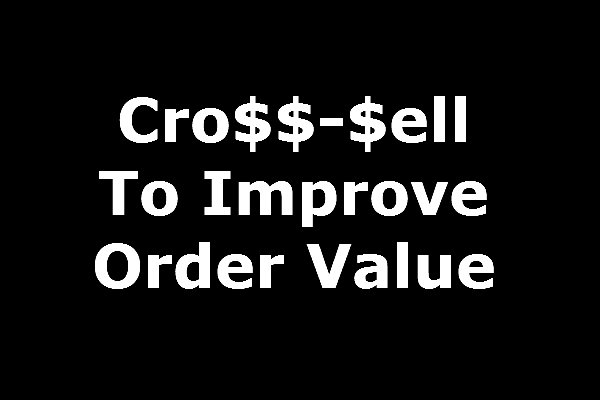Cross selling is good, as long as you know what, where and when to cross sell. Cross selling helps improve per order value when done right. It also helps improve the image of the store especially if it seems that the items you suggest would actually benefit the shopper in some way.
But cross selling can harm your sales and reputation if you do not put any thought into it.
For example, I was browsing for dinner jackets online one day when I noticed a distinct difference between two online apparel stores in the way they cross sell.
Store ‘A’ was very straight to the point. Select a jacket design, select a size on the product page while suggestions (more jackets and a couple of accessories) were being displayed at the bottom and add it to cart. After completing the checkout process, more suggestions with countdown offers were displayed on the Thank You page. Not much wrong with that.
Store ‘B’, however, left an impression. A good one, a that. At first glance, store ‘B’ had the same elements on the front page as store ‘A’. But store ‘B’ had one thing extra – a banner link asking if they could recommend a jacket design for me. After clicking the link, I was brought to a page where I had to answer about 5 short questions via check box. Upon completion, I was offered 3 recommendations and 3 alternative designs that cost more but looked much nicer, admittedly. That’s a tricky but effective way to up-sell.
On the product page, there were interesting tips on how to accessorize, the link between jackets and occasions and the secrets to looking good in jackets.
At the cross sell section, you could see that the items suggested were given proper thought. Everything suggested seems to go nicely with the jacket I chose. It really took a lot of self control not to add any more items to cart.
I noticed that they didn’t suggest any other jacket designs at the product page. I guess they didn’t want to take the chance of confusing/distracting me or cause me to reconsider my selection. They wanted me to add on to my order, not reconsider my order. On the thank you page, they offered an an accessory I clicked on earlier, at a discounted price for a very limited time. These people certainly knew what they were doing.
They knew if I had put my order on hold, the chances of me ever completing in would be slim.
In summary, this is how they did their cross sell.
- Suggested a limited number of alternatives for the same type of item early in the selection process.
- On the product page, they offered items to match item on product page. No alternatives were suggested.
- On the Thank You page, they offered a product (an accessory) that was clicked earlier on the product page.
Recent Posts:
- Get A Custom Designed Website + Branding Solution With InstanteStore – From Concept To Creation
- Why Aesthetic Visuals Matter on Your Website and Social Media.
- How InstanteStore Helped Sagiri Dayal Launched A Successful Online Store With Immediate Sales
- SCAM ALERT – Fake Company Asking People To Send Them Money For Tasks
- How To Setup Stripe Account For Ecommerce


